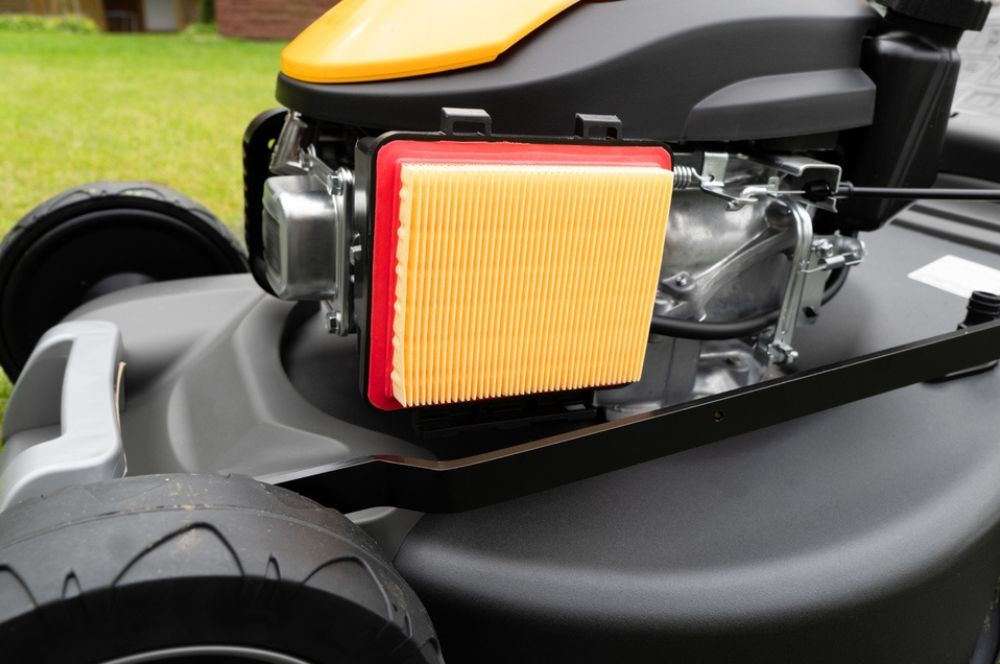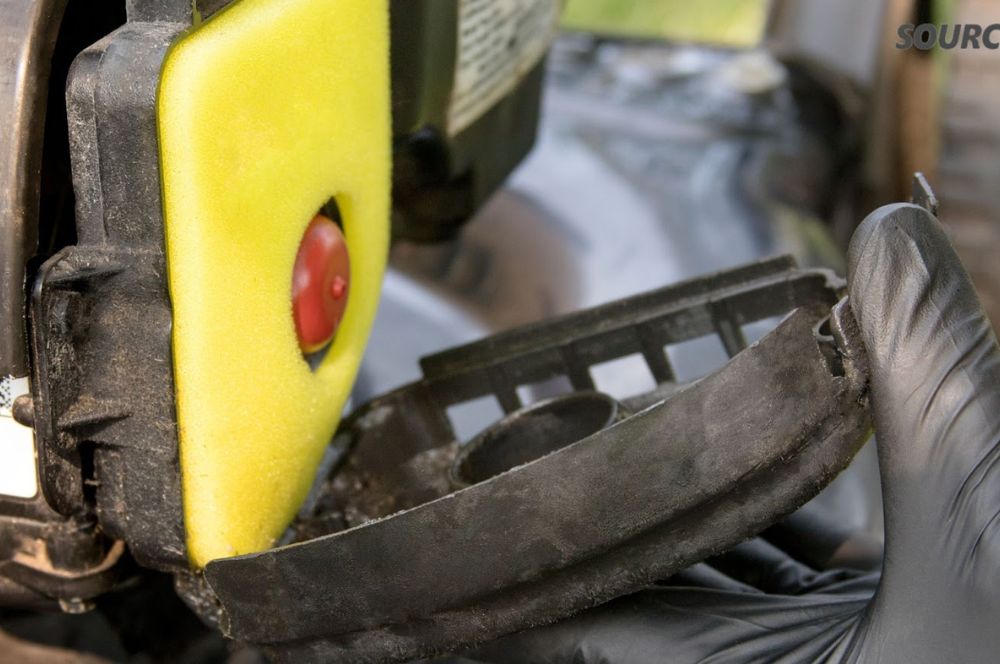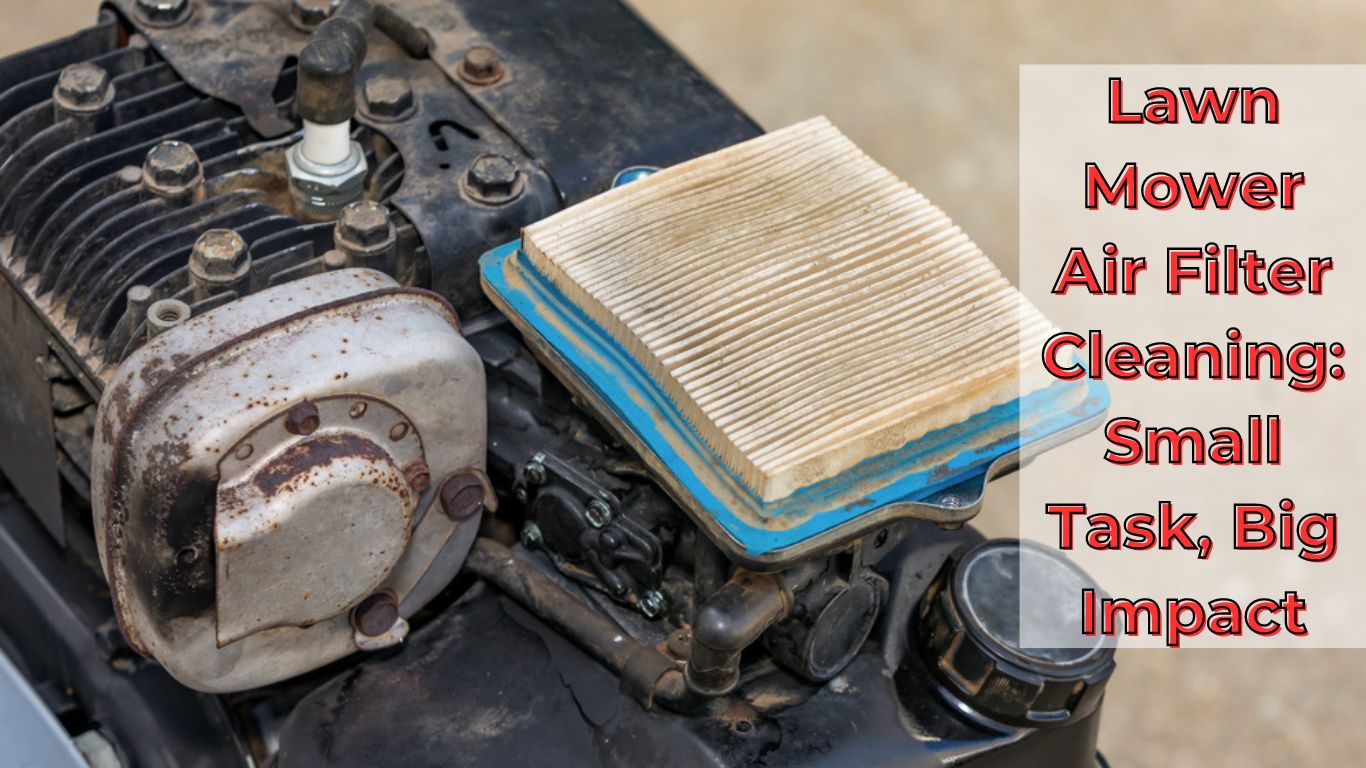When tackling those steep hills, it’s all too easy to forget about the importance of lawn mower air filter cleaning. But trust me, this small maintenance step has a huge impact on how your mower handles tough terrain. Picture trying to breathe through a stuffed-up mask—your mower deals with the same struggle when its filter is dirty. Here at Best Lawn Mower for Hills, we know that regular upkeep is key to keeping your mower running smoothly and efficiently. Skip this simple task, and you’re looking at engine problems, poor fuel economy, and potentially pricey repairs. In this guide, I’ll walk you through how to clean your lawn mower’s air filter so it’s ready to take on whatever your lawn throws its way.
Why Air Filter Maintenance is Critical for Your Lawn Mower’s Longevity
Understanding the Role of the Air Filter in Your Mower’s Health
The air filter is one of the most overlooked components, yet it’s vital to your lawn mower’s health. Think of it as the lungs of your machine, blocking dust, dirt, and debris from entering the engine. It ensures a steady supply of clean air, keeping the engine’s combustion process smooth. Without it, your mower’s engine could suffer serious, long-term damage.

The Cost of Neglect: What Happens When You Don’t Clean or Replace Your Air Filter
Neglecting the air filter is like waiting for a problem to explode. A clogged filter chokes off the engine’s air supply, leading to all sorts of issues. Your mower’s fuel efficiency tanks, its power drops, and it begins to overheat from working too hard. Over time, these small problems can lead to irreversible damage, making an easy maintenance job a costly repair. You’ve got two options: spend a few minutes cleaning the filter now or spend hours and dollars fixing it later.
Getting Started: Essential Tools and Materials for Air Filter Cleaning
What You’ll Need to Clean Your Mower’s Air Filter Effectively
Cleaning your lawn mower air filter doesn’t require a workshop full of tools. All you need is a pair of gloves to keep your hands clean, a socket wrench to remove the air filter cover (if needed), and some compressed air or a soft brush to gently knock off the dirt. If you’re working with a foam filter, grab a bucket of soapy water and give it a good scrub. The trick is to clean without damaging the filter itself.

Safety First: Precautions to Take Before You Begin
Before you jump into the process, let’s cover some basic safety steps. First off, always disconnect the spark plug before doing any work on your mower. This prevents any accidental engine start-up that could catch you off guard. Don’t forget to throw on a pair of gloves too—they’ll keep your hands safe from grime and any sharp parts you might run into. A little caution goes a long way toward ensuring your lawn mower air filter cleaning is both safe and successful.
Identifying Your Air Filter Type: Foam, Paper, and Dual-Element Filters
How to Quickly Determine Which Air Filter Your Mower Uses
Not all filters are the same, so the first step in lawn mower air filter cleaning is figuring out which one you have. To do this, simply pop open the air filter housing and take a look inside. You’ll find one of three common types:
- Paper Filter: Looks like pleated paper, usually in white or off-white. It’s designed to catch fine particles like dust.
- Foam Filter: Made from porous foam, often in red or blue. This type is great for catching larger particles like dirt and grass.
- Dual-Element Filter: A combination of foam on the outside and paper on the inside for extra protection.
Each filter type needs a different cleaning method, so knowing what you’re dealing with is crucial.
Understanding Dual-Element Filters and How to Handle Them
Dual-element filters are like the best of both worlds, giving you two layers of protection. The foam catches bigger debris, while the paper handles the finer stuff. When cleaning these filters, treat each layer separately:
- Foam Layer: Wash it gently with soap and water, rinse thoroughly, and let it dry completely before reinstallation.
- Paper Element: Use compressed air to carefully blow out dirt, but avoid using a brush, as it can push debris further in.
It’s a bit more effort, but lawn mower air filter cleaning for dual-element filters ensures your mower stays in top shape.
Step-by-Step Guide to Lawn Mower Air Filter Cleaning For Foam Filters
Removing the Foam Air Filter Without Damaging It
When tackling lawn mower air filter cleaning for foam filters, start by carefully removing the filter from its housing. It’s usually secured with a clip, wing nut, or similar fastener, so check your manual if you’re unsure. Take care not to bend or tear the foam, as that can compromise the filter’s effectiveness.

Proper Cleaning Techniques for Foam Filters: Washing, Drying, and Oiling
Now that the foam filter is out, here’s how to clean it properly:
- Wash: Soak the foam in warm, soapy water using a mild detergent. Be gentle—no rough scrubbing, or you could damage the filter.
- Rinse: Rinse thoroughly with clean water until no soap residue remains.
- Dry: Squeeze out any excess water and let the filter air dry completely. Don’t rush this step—reinstalling a damp filter can restrict airflow and harm your engine.
- Oil: Once the filter is completely dry, apply a light coating of foam filter oil. This helps trap fine particles and boosts your filter’s efficiency. Be sure to use oil specifically designed for foam filters, following the manufacturer’s instructions.
With these steps, your lawn mower air filter cleaning will keep your mower running smoothly, ready for any challenge.
Reassembling and Reinstalling the Filter Correctly
Once your filter is clean, dried, and oiled, it’s time to reinstall it. Make sure the filter fits snugly back into its housing and that all fasteners are tightened properly. A tight seal is critical to prevent unfiltered air from slipping into the engine, which would undo all your lawn mower air filter cleaning work. Routine maintenance like this helps your mower run smoother and more efficiently, even when you’re mowing on those steep hills.
Should You Clean Paper Filters or Replace It?
Why Paper Filters Should Be Replaced, Not Cleaned
Paper air filters are meant to be single-use. Their tightly packed pleats are great at catching fine dust, but cleaning them is a bad idea. Blowing air or trying to brush them off may get rid of some debris, but it can also damage the delicate fibers or force dirt deeper into the filter, which could lead to engine trouble down the line.
Instead of risking damage, the smartest approach to lawn mower air filter cleaning with paper filters is simply replacing them when they’re dirty. A fresh filter will save you from headaches later, and the cost of a new one is a lot less than an engine repair.

How to Choose the Right Replacement Filter for Your Mower
Choosing the correct replacement is essential for proper lawn mower air filter maintenance. Always check your mower’s manual for the exact part number or the right specifications.
If you’re unsure, hardware stores or online retailers can usually help you find a filter that fits your mower’s make and model. A good fit ensures that airflow remains smooth and prevents dust from sneaking past the filter into the engine.
Step-by-Step Replacement Process: From Removal to Disposal
Replacing a paper filter is easy, making lawn mower air filter cleaning a quick job:
- Remove the Old Filter: Open the air filter housing and take out the old filter. Pay attention to how it was positioned to ensure you install the new one correctly.
- Install the New Filter: Place the new filter inside the housing, making sure it’s seated correctly and aligned. Secure the housing and fasteners.
- Dispose of the Old Filter: Most paper filters can be tossed with household trash, but check local guidelines for proper disposal or recycling options.
By sticking to these steps and regularly swapping out your paper air filter, your mower’s engine will stay in peak condition, ready to tackle even the toughest hills.
Maintenance Tips to Extend the Life of Your Lawn Mower Air Filter
Routine Checks: How Often Should You Inspect Your Air Filter?
The frequency of lawn mower air filter cleaning and inspection can vary based on how often and where you mow. If your lawn is in good shape, a once-a-month check may be enough. But if you’re battling overgrown grass or dusty areas, you’ll want to inspect the filter every week. Remember, a clean filter is essential for keeping your engine running smoothly, so don’t let it slip off your maintenance checklist.

Pro Tips for Keeping Your Air Filter Cleaner for Longer
Want to spend less time on lawn mower air filter cleaning? Here are some easy ways to stretch out the time between cleanings:
- Mow When It’s Dry: Wet grass clippings stick to everything, including your air filter, so mow when the grass is dry to keep debris to a minimum.
- Store It Right: Keep your mower in a clean, sheltered area like a garage or shed. This will help protect it from dust and dirt, which will extend the life of your air filter.
- Quick Clean After Use: After each mow, give your air filter a blast of compressed air to clear off any loose debris. This simple step can significantly cut down on how often you need to clean or replace the filter.
Common Mistakes to Avoid During Air Filter Maintenance
Even the best-intentioned DIYers can run into a few hiccups with air filter cleaning. Here are some common mistakes to watch out for:
- Over-Oiling Foam Filters: Too much oil can block airflow and hurt your mower’s performance. A thin, even coat is all you need.
- Using Harsh Cleaners: Stick to mild detergent for foam filters. Strong chemicals can break down the material and shorten the filter’s lifespan.
- Improper Reinstallation: If the filter isn’t seated properly or is left loose, it allows dirt and debris to sneak into the engine, negating your hard work. Make sure everything is snug and secure before firing up your mower.
Recognizing the Signs of a Worn-Out Air Filter
Symptoms of a Dirty or Damaged Air Filter: What to Look For
The clues that your air filter is on its last legs aren’t always glaring, but if you’re paying attention, they’re easy to spot. Think of it like an early warning system, quietly alerting you that something’s wrong under the hood. Here are some telltale signs to keep an eye on:
- Loss of Power: If your mower feels weak or sluggish, especially when tackling hills, a clogged filter might be suffocating your engine.
- Sputtering or Stalling: If your mower starts sputtering or cutting off unexpectedly, it could be choking due to a dirty filter.
- Black Smoke: Black exhaust smoke is often a sign of incomplete combustion, which can happen when the engine isn’t getting enough air.
- Increased Fuel Consumption: If your mower is guzzling gas, a clogged air filter could be to blame, forcing the engine to work overtime.
- Hard Starts: A mower that’s tough to get going might be struggling to get enough air because of a clogged filter.

How a Compromised Air Filter Affects Your Mower’s Performance
Ignoring a dirty air filter doesn’t just cause minor hiccups—it can snowball into bigger issues that affect your entire mowing experience and your mower’s lifespan.
- Reduced Engine Efficiency: Your engine thrives on a steady stream of clean air. When the filter’s clogged, combustion becomes inefficient, wasting both fuel and power.
- More Fuel Consumption: A struggling engine burns more gas, which hits you in the wallet and isn’t great for the environment, either.
- Overheating: Without proper airflow, the engine can overheat, leading to serious damage and costly repairs.
- Uneven Mowing: A weak engine means poor cuts, leaving your lawn looking less than its best.
At the end of the day, keeping your lawn mower air filter clean is essential for peak performance and avoiding expensive fixes. Recognizing these red flags early can save you a lot of trouble and help your lawn stay in top shape.
Where to Find Trustworthy Lawn Mower Maintenance and Usage Tips
At Best Lawn Mower for Hills, we’re dedicated to helping you master lawn care on challenging terrain. Whether you’re looking for the perfect mower or need expert advice on maintenance, our team—led by landscape architect David Martinez and mechanical engineer Sarah Nguyen—has you covered. With over 15 years of experience, they bring in-depth knowledge of lawn mower technology and landscape management to guide you through every step.
Our website not only features product reviews but also offers practical tips, detailed buying guides, and a vibrant community of lawn care enthusiasts. Visit us today for expert advice and ensure your mower is ready to tackle any hill with ease!
Expert Q&A: Lawn Mower Air Filter FAQs
Can I Clean My Air Filter Too Often?
It’s possible! Cleaning your air filter too frequently can wear it down. Stick to the manufacturer’s recommendations based on how often you mow and the conditions you mow in.
What If I Install the Filter Incorrectly?
If you think you’ve installed the filter wrong, stop the mower, disconnect the spark plug, and check it. Make sure it’s properly aligned. When in doubt, refer to your owner’s manual.
Is It Worth Upgrading to a Higher-Quality Air Filter?
It depends on your mowing habits. If you often mow in dusty or harsh environments, a premium air filter can offer better protection and last longer. For casual mowing, a standard filter should do just fine.
Conclusion
There’s nothing quite like hearing the smooth hum of a well-tuned mower, catching the fresh scent of newly cut grass, and admiring a job well done. But behind that satisfaction is the real hero: a clean air filter. It’s not just about preventing engine problems—it’s about maximizing performance, extending your mower’s life, and getting that perfect lawn you’re after.
So, make lawn mower air filter cleaning part of your regular upkeep. Check it often, clean or replace it when necessary, and your mower will run as smoothly as a dream. A little maintenance now goes a long way, and both your lawn and your wallet will thank you for it. For more expert tips, you can always check out Best Lawn Mower for Hills, your go-to resource for all things mower-related.


